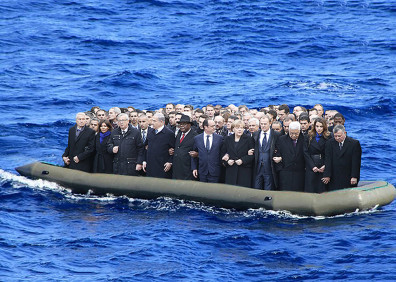War on Drugs…War on (some) Drugs (possessed by certain individuals)
daniela.solano
When I first arrived at this institution, the class sizes and the amount of reading that was assigned did little to concern me. The biggest culture shock was the normalization of drug use. A time before the legalization of cannabis in the state of Washington. I was surrounded by students who spoke of their drug habit with no fear, voicing annoyance that they had to figure out who to get it from, smoking in dorm rooms and right outside of dorm room buildings. Confusion mixed with anger flowed through my mind. I spent all of my youth being conscious of stereotypes and the need to stay clear from the slightest hint of misconduct while still being suspected. Making sure to stay far away from drugs, spending my school years constantly being monitored; banning clothing with too many pockets, limiting backpack and locker usage and being ‘cautioned’ -threatened with sporadic drug dog visits. It felt as if they were sure we would mess up and we always had to prove otherwise.
A constant fear of making a wrong decision that would ruin your life was far from the minds of all these new faces I had encountered in college. In the same months I hear those of a higher social status voice their love of cannabis I hear the tear inducing frustration of a student that spent her youth constantly battling the stigma of her peers. Since she was Mexican and her family had property their success was automatically assumed as having been a result of narcotic involvement. The stereotype that racial minorities are the root of our drug problem is something that is still being believed as we have noted with uproar of candidate approval to a certain individual. This fear no matter how misinformed is the voice that is being heard creating an enforcement of policies reflective of the misinformed belief.
The early seventies proclaimed drug abuse public enemy number one. Giving birth to the War on Drugs and thus enhancing law enforcement and judicial practices. It has cost one trillion dollars after millions of arrest and has resulted in no changes to illegal drug use. Instead we have 500,000 people incarcerated for nonviolent drug crimes. This call for action against drugs have resulted in hyperactive policing of poor persons and minorities even though drug usage is similar across the board and federal studies show more drug use among white youths. Disproportionate arrests that have created horrifying circumstances where white Americans, the majority of this country use crack cocaine more than African Americans but African Americans account for 85% of crack cocaine arrests. A new focus point since the 90s being the arrest of easily targeted poor whites for use of methamphetamine. Not a war on drugs but a war on poverty as displayed by glorified drug arrests.
Early 2000s we have “Pot Princess” Julia Diaco from New York who after multiple drug sales to an undercover narcotics officer facing up to 25 years in prison was sentenced to 5 years on probation. An injustice heightened in this article http://www.drugpolicy.org/news/2006/03/nyu-pot-princess-sentenced-treatment-and-probation-despite-multiple-drug-sales at the comparison of Ashley O’Donoghue, a black man who was also arrested as a first time nonviolent drug offender who is serving seven to twenty one years. Now nearing the end of 2015 we have Sarah Furay an “adorable drug kingpin” of Texas http://www.thedailybeast.com/articles/2015/12/01/when-white-girls-deal-drugs-they-walk.html the daughter of a DEA agent possessing five different narcotics along with packing materials and two digital scales.
After learning about the woman from Texas, her privilege and her narcotic possessions, justice would be that she would get served the life ending consequences that come to racial minorities and those living in poverty. But her arrest does little to the fact that the war on drugs has created a target of brown and black bodies and those who live in poor neighborhoods as the worst and ONLY enemy. These stereotypes have created hyper action to one that grant invisibility to another. So long as we keep drug users and dealers in our minds to a certain stereotype we keep the Sarah Furays of this country profitable in their markets and safe from incarceration and public scrutiny. If this policy were really about protecting our children by confiscating drugs that can hurt them, there would be a lot more drug raids on and around college campuses. Furthermore if the war on drugs is truly about keeping people safe which can be interpreted as keeping people healthy we should address the root of why people are seeking narcotics.
References
Giordani, E. (2015). Criminal Justice. In Latino stats: American Hispanics by the numbers. New York, New York: The New Press.
Haglage, A. (2015, December 1). When Whtie Girls Deal Drugs, They Walk. Retrieved December 17, 2015, from http://www.thedailybeast.com/articles/2015/12/01/when-white-girls-deal-drugs-they-walk.html
Jarecki, E. (Director). (2013). The House I Live In [Motion picture on DVD]. Virgil Films.
Mohamed, A., & Fritsvold, E. (2012). Dorm room dealers: Drugs and the privileges of race and class (Paperback ed.). Boulder, Colorado: Lynne Rienner.
Newman, T. (2006, March 22). NYU “Pot Princess” Sentenced to Treatment and Probation Despite Multiple Drug Sales. Retrieved December 17, 2015, from http://www.drugpolicy.org/news/2006/03/nyu-pot-princess-sentenced-treatment-and-probation-despite-multiple-drug-sales
“Supply Demand” Graphic. Mike Keefe. (2009).The Denver Post. www.eaglecartoons.com http://www.ldjackson.net/wp-content/uploads/2011/02/illegal-drug-demand.jpg
“War on Drugs Message” Graphic. Kirk. Kanderson@pioneerpress.com http://greenwellness.org/wp-content/uploads/war_on_drugs_is_bw_kirk_anderson_20.jpg




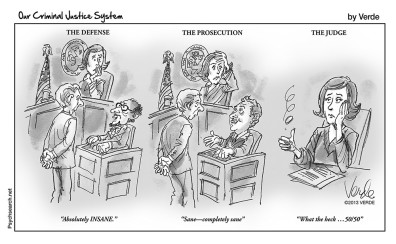


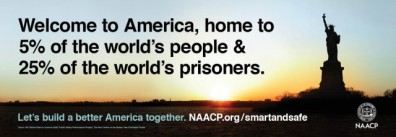

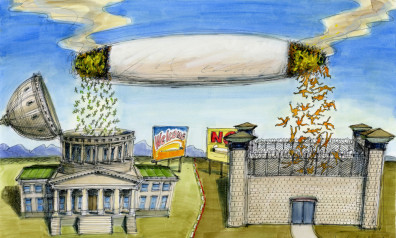
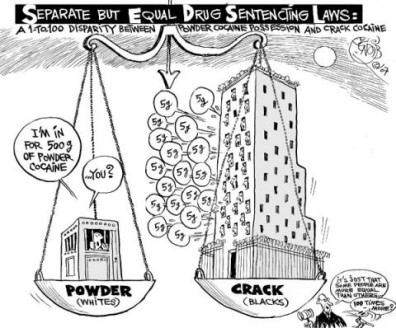
 In the year 1997, two heavily armed men entered a Southern California bank and began their reign of terror. Armed with automatic weapons, body armor, and ski masks, the two individuals forced their way into the bank and created a chaotic scene in order to get their money. As Los Angeles Police Officers responded, many of them were outgunned as they didn’t have the proper resistance (weaponry) to take on the suspects at large and protect the civilians around them (Orlov, 2012). With responding patrol officers only armed with semi-automatic rifles and 12 gauge shotguns, they were for a long time losing the battle that ended in dozens of officers and civilians injured. From this day that put all of North Hollywood, California in panic mode, police departments started providing semi-automatic rifles (M-16’s) to patrol officers, as well as increasing their use of Special Weapons and Tactics Teams (SWAT) (Orlov, 2012). This sense of ramping up increases in military like models has somewhat divided the country regarding whether to militarize our nations police forces or to demilitarize them. Some argue that equipping police across the country with military graded equipment leads to a totalitarian state with too much power and control of the government/ authorities, while others argue that equipping our police force with whatever they need is essential for the safety and protection of our communities; especially faced with an ever changing threat from those who wish to cause harm to civilians. Despite the appropriate increase of militarization to the combat criminals who pose as lot of risk, paramilitary group been seen to cause a lot of harm with their aggressive tactics; often leading to frustration within the community they are meant to serve. Thus, the militarization of police should not be used immediately, but rather only be used in dire situations.
In the year 1997, two heavily armed men entered a Southern California bank and began their reign of terror. Armed with automatic weapons, body armor, and ski masks, the two individuals forced their way into the bank and created a chaotic scene in order to get their money. As Los Angeles Police Officers responded, many of them were outgunned as they didn’t have the proper resistance (weaponry) to take on the suspects at large and protect the civilians around them (Orlov, 2012). With responding patrol officers only armed with semi-automatic rifles and 12 gauge shotguns, they were for a long time losing the battle that ended in dozens of officers and civilians injured. From this day that put all of North Hollywood, California in panic mode, police departments started providing semi-automatic rifles (M-16’s) to patrol officers, as well as increasing their use of Special Weapons and Tactics Teams (SWAT) (Orlov, 2012). This sense of ramping up increases in military like models has somewhat divided the country regarding whether to militarize our nations police forces or to demilitarize them. Some argue that equipping police across the country with military graded equipment leads to a totalitarian state with too much power and control of the government/ authorities, while others argue that equipping our police force with whatever they need is essential for the safety and protection of our communities; especially faced with an ever changing threat from those who wish to cause harm to civilians. Despite the appropriate increase of militarization to the combat criminals who pose as lot of risk, paramilitary group been seen to cause a lot of harm with their aggressive tactics; often leading to frustration within the community they are meant to serve. Thus, the militarization of police should not be used immediately, but rather only be used in dire situations. Ever since the Drug War era and the War on Terror, America’s law enforcement agencies have ramped up militaristic approaches and have led to a warrior ethos philosophy for officers. With a moral panic spreading across cities looking to put a stop to the selling and use of illicit drugs, the government stepped up its funding towards law enforcement hoping to create a deterrence. With many of these law enforcement agencies stepping up its presence in communities across the country, they created more specialized units; trained to handle the problems with strict guidelines of power and enforcement. The Drug Enforcement Agency and many other federal and local agencies put more funding and focus towards units that would rely on a forceful tactic of element and surprise to counter-act crimes (mostly dealing with drug offenses). These specialized unites (SWAT) would often force their way into homes (with body armor, assault rifles, flash-bangs, and a determined mindset to ravage these houses) of suspected drug users and dealers. More communities across the country (mostly poor minority communities) are experiencing heavily armed SWAT teams raiding people’s homes in the middle of the night, often just to search for drugs (ACLU). These police officer’s mindsets of a warrior mentality are often linked with the governments philosophy of “tough on crime.” However, for a lot of these cases the offender didn’t even present a violent offense. Last year (nationwide) police arrested 1.6 million nonviolent drug offenders (Stamper, 2011). Some of these non-violent drug offenders were taken into custody from SWAT teams assaulting their homes. The mere fact that these people presented no danger (based on intelligence gathering) make these dramatic invasions of the home unnecessary, as well as creates a traumatic experience for the people inside. In very shocking cases of SWAT team raids gone wrong, communities see that wrong houses are hit, as well as innocent people and family pets are shot and killed by the police raiding the homes. (Stamper, 2015). Problems like these where you have non violent offenders facing up against heavily armed men breaking down their doors, along with innocent people/pets getting killed creates an image of a public-safety institution (the authorities/police) at war with it’s own people.
Ever since the Drug War era and the War on Terror, America’s law enforcement agencies have ramped up militaristic approaches and have led to a warrior ethos philosophy for officers. With a moral panic spreading across cities looking to put a stop to the selling and use of illicit drugs, the government stepped up its funding towards law enforcement hoping to create a deterrence. With many of these law enforcement agencies stepping up its presence in communities across the country, they created more specialized units; trained to handle the problems with strict guidelines of power and enforcement. The Drug Enforcement Agency and many other federal and local agencies put more funding and focus towards units that would rely on a forceful tactic of element and surprise to counter-act crimes (mostly dealing with drug offenses). These specialized unites (SWAT) would often force their way into homes (with body armor, assault rifles, flash-bangs, and a determined mindset to ravage these houses) of suspected drug users and dealers. More communities across the country (mostly poor minority communities) are experiencing heavily armed SWAT teams raiding people’s homes in the middle of the night, often just to search for drugs (ACLU). These police officer’s mindsets of a warrior mentality are often linked with the governments philosophy of “tough on crime.” However, for a lot of these cases the offender didn’t even present a violent offense. Last year (nationwide) police arrested 1.6 million nonviolent drug offenders (Stamper, 2011). Some of these non-violent drug offenders were taken into custody from SWAT teams assaulting their homes. The mere fact that these people presented no danger (based on intelligence gathering) make these dramatic invasions of the home unnecessary, as well as creates a traumatic experience for the people inside. In very shocking cases of SWAT team raids gone wrong, communities see that wrong houses are hit, as well as innocent people and family pets are shot and killed by the police raiding the homes. (Stamper, 2015). Problems like these where you have non violent offenders facing up against heavily armed men breaking down their doors, along with innocent people/pets getting killed creates an image of a public-safety institution (the authorities/police) at war with it’s own people.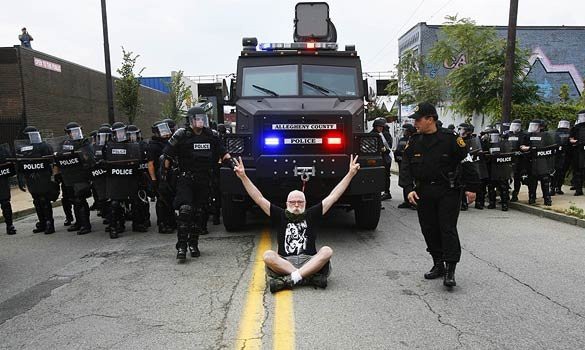 The year 1997 also brought along an updated program, known as the 1033 program (created under the National Defense Authorization Act). This program essentially allowed for the United States Department of Defense to transfer military-grade gear to civilian law enforcement agencies across the country because of the Iraq and Afghanistan war winding down. Through this program, agencies (including ferguson-area authorities) were able to acquire heavy body armor, semi-automatic rifles, armored vehicles (MRAPS and BearCats), grenade launchers, riot gear, tear gas, wet weather gear, and blankets (Fox & Cook, 2014). Through this increase in military style equipment, law enforcement agencies starting using them on a daily basis in order to maintain law and order on city streets. Even though officers use a lot of the equipment for their own safety (officer safety), they have been seen to use it incorrectly and inappropriately. As the Ferguson events were unfolding, the whole area had been on high alert which prompted authorities to shown in force. However, the only problem was many of the protests at the beginning were peaceful and really only needed a uniformed police presence (without the military gear and warrior mindset) to monitor their constitutional rights of free speech, as well as the right to assemble peacefully. After this chaotic scene of what seemed like the people vs. the police, the Department of Justice released their report on the Ferguson Police Department. The DOJ expressed that the police agency had handled the situation in the wrong manner (Reilly, 2015). They described that scene where police snipers were on top of armored vehicles, pointing their weapons at the crowds of peaceful protesters (Reilly, 2015). Many in the community saw these officers as attempting to intimidate and threaten the public they are meant to serve (Reilly, 2015). It’s very hard to understand that the men and women who swore to protect and serve are the same one’s seen on images and video’s already in confrontational tactical positions, as if they are ready to strike protesters (who want to freely express their opinions so that society can advance) at a moments notice. Police are meant to diffuse situations and have taken on the role of solving problems that get in the way of peace. However, recently in our history we have seen those in police uniforms escalating confrontations with their equipment, tactics, and demeanor (Baker, 2011). By playing the role of a warrior in the streets, it really hinders the chance to build ties with the communities they are meant to serve.
The year 1997 also brought along an updated program, known as the 1033 program (created under the National Defense Authorization Act). This program essentially allowed for the United States Department of Defense to transfer military-grade gear to civilian law enforcement agencies across the country because of the Iraq and Afghanistan war winding down. Through this program, agencies (including ferguson-area authorities) were able to acquire heavy body armor, semi-automatic rifles, armored vehicles (MRAPS and BearCats), grenade launchers, riot gear, tear gas, wet weather gear, and blankets (Fox & Cook, 2014). Through this increase in military style equipment, law enforcement agencies starting using them on a daily basis in order to maintain law and order on city streets. Even though officers use a lot of the equipment for their own safety (officer safety), they have been seen to use it incorrectly and inappropriately. As the Ferguson events were unfolding, the whole area had been on high alert which prompted authorities to shown in force. However, the only problem was many of the protests at the beginning were peaceful and really only needed a uniformed police presence (without the military gear and warrior mindset) to monitor their constitutional rights of free speech, as well as the right to assemble peacefully. After this chaotic scene of what seemed like the people vs. the police, the Department of Justice released their report on the Ferguson Police Department. The DOJ expressed that the police agency had handled the situation in the wrong manner (Reilly, 2015). They described that scene where police snipers were on top of armored vehicles, pointing their weapons at the crowds of peaceful protesters (Reilly, 2015). Many in the community saw these officers as attempting to intimidate and threaten the public they are meant to serve (Reilly, 2015). It’s very hard to understand that the men and women who swore to protect and serve are the same one’s seen on images and video’s already in confrontational tactical positions, as if they are ready to strike protesters (who want to freely express their opinions so that society can advance) at a moments notice. Police are meant to diffuse situations and have taken on the role of solving problems that get in the way of peace. However, recently in our history we have seen those in police uniforms escalating confrontations with their equipment, tactics, and demeanor (Baker, 2011). By playing the role of a warrior in the streets, it really hinders the chance to build ties with the communities they are meant to serve.





